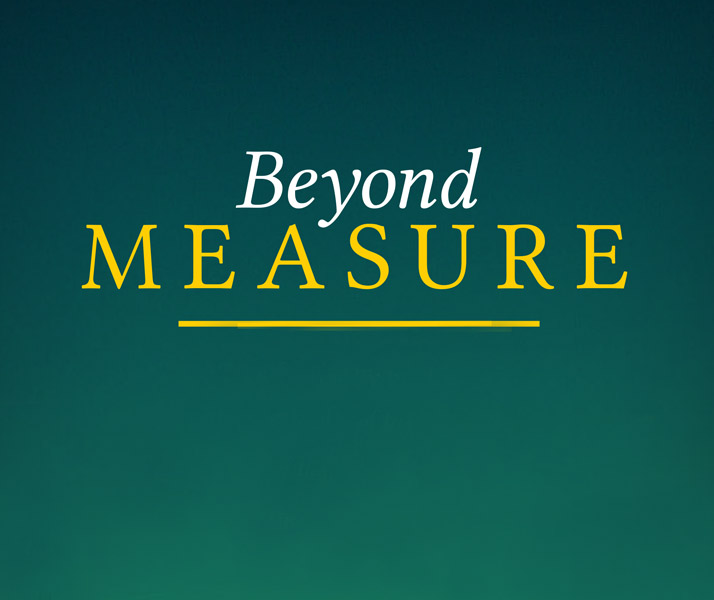
Beyond Measure
Five faculty members retire at the end of the academic year. What follows are tributes acknowledging their immeasurable contributions to Hollins.
Jean Fallon, French
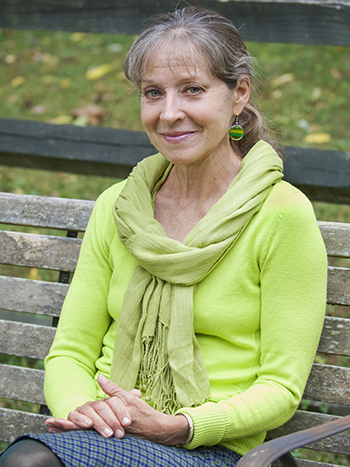 It is an honor and privilege to write this tribute for Jean Fallon, professor of French, on the occasion of her retirement from Hollins. Jean joined the faculty in 1990. During her estimable career, she has been an active scholar, publishing two books, and has contributed new and interesting courses to the curriculum. Those of us who have had the pleasure of observing her teach can attest to the fact that she is a creative, high-energy, passionate, funny, and engaging professor. Her students love her teaching style and have been inspired by her love of French language and culture, as evidenced by the following remarks:
It is an honor and privilege to write this tribute for Jean Fallon, professor of French, on the occasion of her retirement from Hollins. Jean joined the faculty in 1990. During her estimable career, she has been an active scholar, publishing two books, and has contributed new and interesting courses to the curriculum. Those of us who have had the pleasure of observing her teach can attest to the fact that she is a creative, high-energy, passionate, funny, and engaging professor. Her students love her teaching style and have been inspired by her love of French language and culture, as evidenced by the following remarks:
Professor Fallon was the first professor I connected with at Hollins. She has a heart of gold, and I’ve never had a professor who cared more for students than she does. She made class fun for everyone and was always cheerful. She encouraged me to travel abroad, and I credit her for having such faith in me for all I have achieved here at Hollins.
Monica Osborne ’20
Madame Fallon taught me my first-ever French class, and her amazing teaching abilities, positive attitude, and sincere concern for her students were a large part of what led me to becoming a French major. She always brings so much joy into a room, and her creativity and compassion do not go unnoticed. She has been a vital part of my education, and I wish her nothing but the most well-deserved rest and happiness during her retirement.
María Fernanda Junco Rivera ’19
During Jean’s time at Hollins, she has made significant and lasting contributions to our community. She worked on such important endeavors as the Heritage Committee and served as a passionate advocate for Hollins Abroad–Paris (HAP), writing a book-length manuscript about the program that captures the memories of countless alumnae participants. Jean served as our departmental liaison to HAP for many years and corresponded with each and every student while they were abroad. This kind of personal attention to her students—and to her colleagues and friends who also frequently receive kind, handwritten notes—has made an indelible impression on all of us. She is thoughtful beyond measure and cares deeply about everyone in her life.
In addition to her admirable contributions to Hollins, Jean has other passions. She is a dedicated runner, an avid gardener, and a gifted photographer. Of this last talent Morgan Wilson notes, “Jean is able to capture some of nature’s most subtle and beautiful moments in ways that most people would either miss or never take the time to see.” This keen observation says so much about Jean’s character.
While the Hollins community will miss Jean dearly, we are happy for her to have more time to dedicate to her passions, and to her husband, Mike M.A.T. ’01; her sons, Aaron M.F.A. ’12 and Jordan; and her daughter-in-law, Stephanie Lohmann Fallon ’08, M.F.A. ’12.
In closing, I include below a few reflections from Jean’s colleagues and friends.
Jean is a much-beloved teacher known for her creativity, kindness, and devotion to students. We are so very grateful to Jean for her many years of commitment and contributions to the department of modern languages and to Hollins.
Annette Sampon-Nicolas, French
I met Jean in 1992 when she invited me to read for an International Women’s Day event she was helping to organize. The next year, Jean let me sit in on her French class to refresh my very rusty skills, and I experienced what a generous and effective teacher she was. Our friendship grew from there.
Cathryn Hankla ’80, M.A. ’82, English
I’ve always admired Jean, and though our paths don’t cross as often as I would like, I’ve always seen her as a mentor and faculty role model. She’s also one of the kindest, most generous people I know.
Morgan Wilson, biology
Though too infrequent, every encounter with Jean was marked by her joy, goodwill, and graciousness. These are the qualities, among others, that have benefited generations of Hollins students fortunate enough to be in her classes as well as the Hollins community.
Bob Sulkin, art
Alison Ridley, professor of Spanish
![]()
Jeanne Larsen M.A. ’72, English
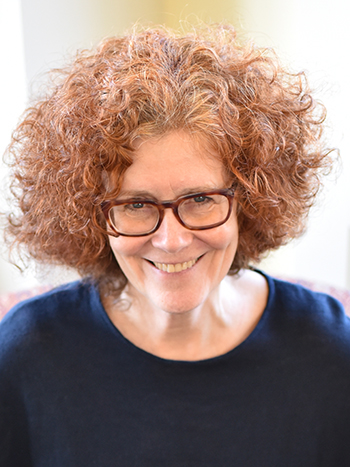 Strangers passing Jeanne Larsen on the sidewalk can’t be blamed for doing a double take.
Strangers passing Jeanne Larsen on the sidewalk can’t be blamed for doing a double take.
Like Andy Warhol, like Patti Smith, like Prince, Larsen possesses that most intangible quality: some essence of coolness. It’s a certain something infiltrating every molecule of her being, right down to the way she sort of glides across Front Quad.
I’m sure I stared the first time I met Larsen, some 20-plus years ago. She sat a stack of books on the circulation desk at Fishburn Library, where I spent my work-study hours my first year.
It wasn’t only her famous crown of glorious, copper-red curls I found so startling. It was the way she peered at me with the intensity of a tropical cyclone.
Today, I know that’s just how Larsen talks to people. A seeker of genuine connection, she reaches out to people of all ages and walks of life. In conversation, all her attention is focused on the here and now. She’s not daydreaming about the hawk she spotted on a recent hike or worrying whether her cats are waiting to be fed. It’s all you and her and a shared moment in time.
Of course, I hadn’t seen anything yet. To witness Larsen in a classroom is to see Yo-Yo Ma at the cello, Julia Child mixing in the kitchen.
When I started this essay, I searched my file cabinet to find an old syllabus from her Contemporary American Poetry class. It’s classic Larsen. Don’t rehash what has been said in class. Do not use other critics’ work. Think for yourself.
It reminded me how Larsen directs her classroom discussions with the precision of an air-traffic controller. She somehow manages to keep blowhards in check, while inspiring even the biggest introverts to speak. After all these years of teaching, she’s certainly heard a hundred students wax on about the religious themes in Denise Levertov’s poems, yet she listens to each comment with an expression of deep interest. When a student finishes, Larsen pauses for a beat, mulling over the comment as if swishing a fine wine. She rephrases the observation (elevating it in the process) and uses it to move forward to the next element of the text. Every student who graduates from one of Larsen’s classes leaves feeling like she has a gift worthy of offering the world.
While she may be known for her unflinching kindness, Larsen takes the responsibility of honing young minds seriously. She doesn’t mince words when attention is required: You need to learn to use a semicolon. Go further with your analysis. The prose needs to be tighter. That said, the edicts are always followed by encouragement. You’re a real writer. Don’t stop now!
As a senior, I won the golden ticket: I had Larsen as my thesis advisor. For an entire year, I had the good fortune to meet with her one-on-one in a dim but cozy office in Bradley Hall to talk about the novel I was attempting. We discussed diagrams, character development, and pace. Lovely language, she reminded me, can’t compensate for a skeletal plot.
The sessions gave me a chance to know Larsen more as a person, instead of the near-mythic figure English majors sometimes turned her into. Here are some things I know: she worships cats; she delights in the year’s first snow fall, newly blooming plants, and her husband’s homemade pies; after growing up on U.S. Army posts, she’s continued traveling the globe; she treasures the richness of the world’s languages and cultures; she loathes bigotry; she’s a feminist, like whoa; she enjoys picturing the far reaches of space.
Larsen sees the study of the written word as the opposite of luxury. Words are a thing of power and magic.
Even though I’ve had some months to digest the news, I struggle to picture Hollins without Professor Larsen. I’ve taken to reassuring myself that less Larsen on campus might mean more Larsen for the world. Her award-winning book of poems, What Penelope Chooses, came out in March. She’s hinted a novel might be in the works. Surely, there will be more traveling, which will indubitably sire more creative offerings. And so, all I can do is to borrow a phrase she used to write on my papers. I say to Jeanne, my mentor, my friend: Push on!
Check out www.jeannelarsen.com to keep up with Larsen’s post-Hollins adventures. For details about What Penelope Chooses, winner of the Cider Press Review Book Award, visit www.hollins.edu/penelope.
Beth JoJack ’98 is a Roanoke writer who has never sweated punctuation more than with this essay.
![]()
George Ledger, psychology
 George Ledger is one of the most surprising teachers at Hollins.
George Ledger is one of the most surprising teachers at Hollins.
For nearly 40 years he has taught psychology, specializing in cognitive science—the technical subjects such as testing, patterning, abnormal psychology (which he insists is not to be applied to his colleagues). He is also tech savvy: I remember working with George on encryption programs, going through them byte by byte to break the copy protection. In spite of this he has, his colleague Bonnie Bowers insists, “maintained a strong and principled aversion to online platforms like Moodle and is not terribly fond of PowerPoint. You can always tell where George has taught a class, because the boards are covered with his spidery notes and complicated diagrams.”
For the most part, George is a solitary who likes solitary activities: fishing, a longtime passion; riding his motorcycle; wandering the halls of Dana at all hours; gardening. Unlike a lot of contemplatives, George’s ruminations as often lead to exasperation as calm: He is very smart, and like a lot of smart people, he believes that problems are, at base, fairly simple; which is why he doesn’t actually think he’s that smart, and why he is surprised (and annoyed) that so many people just don’t get it. If George had a theme song, it would be Chuck Berry’s “Too Much Monkey Business.”
All of which is not to say that George lacks an empathetic side. The evident care he takes with plants—his office is easily mistaken for a greenhouse—suggests a nurturing side, reinforced if you’ve ever seen him deal with children. Years ago, George went fishing with my son and his daughter, and was very plain that “the first rule of fishing is don’t drown.” He is a student of the flora and fauna outside Dana (colleagues excluded) and can tell you where the foxes hang out and where the ducks nest. If his empathy seems to extend in a rather more attenuated form to students, it’s because he has confidence in them: Do the work and don’t drown and all will be fine.
If you walk around Dana you will probably find George there, no matter the time of day: 3 (a.m. or p.m.), 8:30 (a.m. or p.m.), 5:30 (a.m. or p.m.). This confounds everyone. Several of us have discussed this, and, having dismissed the obvious explanation that he is Nosferatu, find ourselves mystified: It’s possible that he moonlights as a security guard, albeit without the uniform. Perhaps he doesn’t sleep and subsists on catnaps or dozing off during meetings.
Of particular interest is how well educated he is: How does a cognitive psychologist make the time to read (and finish) Gravity’s Rainbow? When the faculty had a reading group that went through The Iliad, Moby-Dick, The Aeneid, and Paradise Lost, George was there every step of the way. I have had conversations with George about changing brake shoes, subatomic particles, contemporary literature, cognitive development, the friction coefficient of rubber tires and asphalt (important if you ride a Triumph). All professors at Hollins are well trained in their field, and many know a fair amount about other subjects; but to bridge the humanities-sciences divide so effortlessly is very rare. The earl of Chesterfield said that erudition should be like a watch: Keep it hidden until needed. Chesterfield would find no more devoted acolyte than George Ledger, whose depths are deeper than the vasty deep.
Although much of this goes unnoticed by colleagues, George has firmly established the confidence of the faculty. They elected him chair a few years ago, and he has served on nearly every committee, council, and ad-hoc advisory whatever for the last four decades. Unflappable, affable, direct, and funny, George has proven to be one of the most valuable faculty members during his time at Hollins.
To say that he’s irreplaceable is false, because someone will fill that slot; but more important, it’s incomplete: George goes so far beyond what is expected in a colleague that we would need to hire three or four people to take his place.
![]()
Joe W. Leedom, professor of history
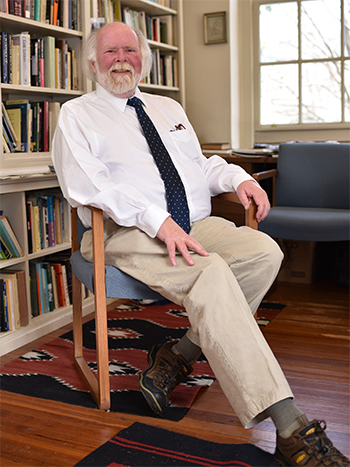 Naturally, Joe’s favorite book is Moby-Dick. The man himself is physically and intellectually imposing, truly a big fish—and Melville assures us that a whale is indeed a fish—in the small pond of Hollins. A colleague described him as “awash in his own abundant knowledge,” and I confess that I have never known a person with a wider compass of reading. Not a passive or forgetful reader, Joe is a rigorous, curious, and contrarian critic. He eagerly engages in debate with colleagues or students on an article in Slate, a verse in the Gnostic Gospels, a review in Rolling Stone, a scene in Hamlet, or the sack of Antioch in both Raymond of Aguilers and the anonymous Gesta Francorum, whether he read the piece last night or last century. A true professor of the liberal arts and onetime holder of the Berry Professorship for excellence in teaching literature, Joe helped lead Sowell faculty reading groups on the Iliad, Catch-22, and, of course, Moby-Dick.
Naturally, Joe’s favorite book is Moby-Dick. The man himself is physically and intellectually imposing, truly a big fish—and Melville assures us that a whale is indeed a fish—in the small pond of Hollins. A colleague described him as “awash in his own abundant knowledge,” and I confess that I have never known a person with a wider compass of reading. Not a passive or forgetful reader, Joe is a rigorous, curious, and contrarian critic. He eagerly engages in debate with colleagues or students on an article in Slate, a verse in the Gnostic Gospels, a review in Rolling Stone, a scene in Hamlet, or the sack of Antioch in both Raymond of Aguilers and the anonymous Gesta Francorum, whether he read the piece last night or last century. A true professor of the liberal arts and onetime holder of the Berry Professorship for excellence in teaching literature, Joe helped lead Sowell faculty reading groups on the Iliad, Catch-22, and, of course, Moby-Dick.
In many senses a Stoic, not the least his preference for lingering in the portico of Pleasants while smoking Marlboros (menthol, lights), Joe readily offers his thoughts to those willing to listen. And students do listen: only for very few admired teachers do followers create Twitter accounts like @Sh*tLeedomSays or print pamphlets like “Leedomisms.” Along with the fierce intellect, he can swear like a sailor and swap salty jokes at poker, which he regularly wins by combining calculation with timely bluffing. Joe’s semi-annual posters for the now-defunct History Department Party are the stuff of legend, and, as with all satire, valuable documents on the Zeitgeist of an institution. I recall the penultimate HDP when he saved us all from the county policeman who (honest-to-God!) while cracking his knuckles sneered: “It smells like a brewery here”; to which Joe replied, “Well…you are standing next to a full recycling bin.” Wit, coolness under fire, and an eye for folly.
I gather that a former president blanched at Joe’s election to chair of the faculty. Like Moby Dick, Joe looms mysterious and threatening from the perspective of Ahabs. And, yes, he accepts that those folks may call him by half the whale’s name. But the man is surprisingly gentle, be it playing fetch with the dogs for hours on Tinker Beach with [Professor Emerita of Biology] Harriet Gray, putting on gloves to load [the late Professor of English] John Cunningham’s furniture into a van (“he can never be truly said to handle us without mittens”), or floating across the stage in a gondola for the Hollins production of Nine. He displays a sensitivity for the polite and the ceremonial that comes, perhaps, from having an English mother and an easygoing family. Principled, precise, and fair even to those who might wish him ill, Joe possesses an understanding of the theories and practices of Roman and English law that any jurisconsult would envy. With all his equanimity, had he not been an academic, I think he would have made a fine judge. I heard that growing up Joe worked on an oil rig and read Shakespeare on breaks. Indeed, “very like a whale.”
George Fredric Franko, professor of classical studies and chair of philosophy and classical studies
 Bob Sulkin, photography
Bob Sulkin, photography
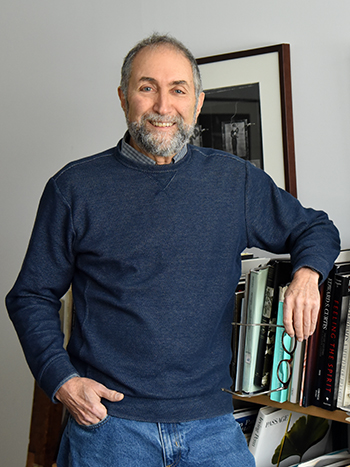 Bob was hired in the summer of 1980, with a recent M.F.A. from the University of Iowa and a portfolio of photographs that were unique and distinctive. He drew on his negatives to accentuate forms and rhythms. This tactic was often considered a destructive way to create a photo, as the integrity of the negative was considered sacrosanct. Since his University of North Carolina–Chapel Hill undergraduate work was in history, he brought a different mindset to making photos.
Bob was hired in the summer of 1980, with a recent M.F.A. from the University of Iowa and a portfolio of photographs that were unique and distinctive. He drew on his negatives to accentuate forms and rhythms. This tactic was often considered a destructive way to create a photo, as the integrity of the negative was considered sacrosanct. Since his University of North Carolina–Chapel Hill undergraduate work was in history, he brought a different mindset to making photos.
Bob was an immediate success as a teacher, and he became a valued colleague. He proved to be an able administrator, too, as he revitalized and reorganized the January Short Term, keeping it a signal feature of Hollins’ experiential model of education.
Bob was innovative in his thinking about the content of classes and explored such topics as cell phone and scanner-based image making. Almost everyone has a smart phone, he reasoned, so let’s learn how to use it for more than taking a selfie.
He initiated and taught the History of Photography course, which began with innovations in the 19th century and ended with the most avant-garde works. Bob has been a valued mentor to many students in the art department and beyond over the decades, and I had often heard them express their appreciation for his insights and support.
I too learned much from Bob about the content embedded in the art of photography. In the summers when [the late Professor of Art] Lewis Thompson, Bob, and I shared studio space in the old Parsonage on the hill, we would discuss ideas about perception, perspective, and the imagination of space in art.
His own work has evolved into complex studio constructions of implied dramatic narrative, which brought out his interests in popular culture and history to reveal themselves in his imagery. His extensive bodies of work have garnered critical attention in numerous exhibitions, including at the Virginia Museum of Fine Arts.
Bob’s legacy to Hollins derives from his long and dedicated service as teacher, mentor, and colleague. I am so pleased to see that he will have the time in his retirement to focus on his creative life in his studio. I am eager to see what comes next.
Bill White, professor emeritus of art
It was my privilege to be Bob’s colleague in the art department for 25 years. His inquisitive spirit and broad knowledge of photographic possibilities and traditions shaped the content of his courses and his dedication to bringing the art world to Hollins.
He provided students with in-depth experiences in a broad range of studio and art history courses, including analog and digital photography, often focusing on alternative processes and methods for creating images. In his interactions with students there was always a sense of mutual respect and encouragement. His knowledge of photographic possibilities and traditions was combined with an emphasis on each student’s talents and concerns.
His legacy outside the classroom includes countless contributions to the cultural life of Hollins. He curated numerous exhibitions of nationally recognized photographers for the gallery program and brought many artists and curators to campus to speak, meet students, and visit classes. He was instrumental in designing the outstanding photography facility in the Wetherill Visual Art Center. On two occasions, he sponsored a photography festival that featured a themed approach to contemporary photography, facilitating an exchange between students and the artistic community.
Bob’s modest and enthusiastic approach to art always created an appetite for further exploration of ideas, whether you were a student or faculty member. His own photographs evolved into studio assemblages themed on identity, culture, metaphysical machines, and prototypes. He invented imagined worlds from the most unlikely objects, using a view camera to photograph his constructions. Each semester he roamed the design studio, where the detritus of art making remained after the students left. I learned how the camera lens transforms items like dirty plexi, odd artifacts, paper, rope, foam, foil, shards, wheels, or plaster into something new by watching him select objects for his use. There are only a handful of artists who change the way you see and make art in your lifetime. Bob is one of those individuals who changed me.
Jan Knipe, professor emerita of art
